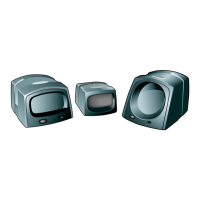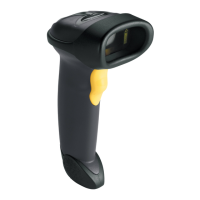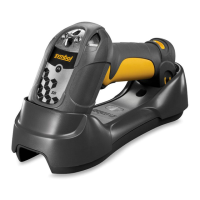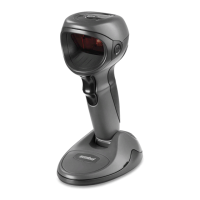Do you have a question about the Motorola Symbol MT2090 and is the answer not in the manual?
Overview of the guide's content and the available documentation set for the devices.
Explanation of document conventions and how to obtain service information.
Steps for unpacking the device and preparing it for first-time use.
Information on various cradles, chargers, and other accessories for the device.
Instructions for connecting to host systems and initial device configuration.
Details on the device keypad, its layout, functionality, and navigation methods.
Overview of device screens, icons, menu structure, and status information display.
Instructions for using core applications like Scan Item/Inventory and device configuration.
Details on device operation modes, aiming patterns, and indicator definitions.
Tips and tables for optimizing scanning performance and decode ranges.
Details on Bluetooth profiles, setup modes, host parameters, and keyboard configurations.
Procedures for pairing devices, managing connections, and handling disconnections.
How to configure Bluetooth security settings like authentication, PIN codes, and encryption.
Customizing scanner behavior like trigger modes, aiming, illumination, and beeper settings.
Configuring how data is transmitted, including prefixes, suffixes, and code identifiers.
Configuring how the device captures images, including modes, illumination, and aiming.
Adjusting image processing parameters like cropping, brightness, and file format settings.
Settings for capturing and formatting signature images, including dimensions and file types.
How to customize the device's startup program and the default home screen appearance.
Customizing specific applications and managing device services for tailored operation.
Steps for connecting the device via RS-232 and configuring host parameters.
Essential serial communication settings like baud rate, parity, data bits, and handshaking.
Steps for connecting via USB and selecting the appropriate USB device type.
Configuring USB keyboard emulation, data handling, and character mapping settings.
Instructions for connecting to IBM 468X/469X hosts and configuring port addresses.
Steps for connecting a keyboard wedge interface and selecting host types.
Customizing keyboard wedge behavior including country types, delays, and key mappings.
Configuration options for UPC, EAN, and related symbologies, including supplementals.
Settings for linear barcodes (Code 128, Code 39, etc.) and 2D symbologies (PDF417, QR Code).
Configuration for postal barcodes and GS1 DataBar variants, including composite codes.
Information on different cradle types, their features, and charging capabilities.
Details on battery care, charging, and the four-slot battery charger.
How to define ADF rules using criteria such as code type, length, and specific strings.
Implementing ADF actions like sending data, moving cursors, and using special commands.
Recommended maintenance procedures for the device, batteries, and cradles.
Solutions for common problems encountered with the device, cradles, cables, and software.
Default parameters for Bluetooth, USB, RS-232, and Keyboard Wedge host interfaces.
Default settings for barcode symbologies, user preferences, and miscellaneous options.
Identifiers for different barcode symbologies used in programming.
Identifiers conforming to AIM standards for barcode symbology identification.
Examples of UPC-A, UPC-E, UPC-E1, EAN-13, EAN-8, and Code 39 sample barcodes.
Sample bar codes for Code 93, Code 11, Code 128, Codabar, MSI, and Interleaved 2 of 5.
Bar codes representing numeric characters 0-9 and Cancel for parameter input.
Bar codes representing alphanumeric characters, symbols, and special keys for programming.
Explanation of CapCode structure, signature area, patterns, and dimensions for capture.
Definitions of terms related to bar codes, scanners, and hardware components.
Definitions of technical terms like CDRH, Character Set, Check Digit, and Codabar.
| Brand | Motorola |
|---|---|
| Model | Symbol MT2090 |
| Category | Barcode Reader |
| Language | English |











